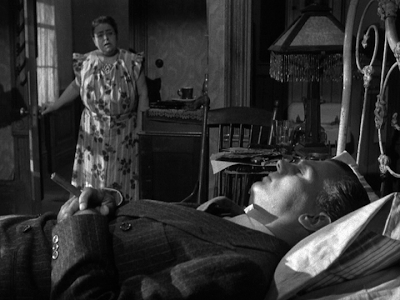The Film – Shadow of a Doubt, dir. Alfred Hitchcock
The Set-Up – Serial murderer Uncle Charlie (Joseph Cotton)
prepares to flee the law and go hide out with his sisters’ family.
This sequence is here because it is such a great
illustration of Hitchs’ command of film language, and how he could manipulate
the viewer. The first shot is of Charlie in his room, relaxing. Money is strewn
about the place. Somehow, you just know that the reason for it being there is
terrible. His landlady comes into the room, and he is icy and distant with her,
until she remarks that there were a couple of men asking about him. Without
giving us any real detail, Hitchcock has told us a great deal.
Now flash to the idyllic little town of Santa Rosa, and the
family of his sister. We visit his niece Charlie (Teresa Wright), as she rests
in HER room. The thing that is interesting in seeing these two shots is that
they are virtually the same, but they are facing in opposite directions. It’s a
clever way of establishing that there is a bond between these two people (she
is named after him), but that they are different in some fundamental way.
The other portion of the opening passages that I admire is a
small sequence regarding a telegram. The family gets a phone call about a
telegram. When the phone rings, we can already surmise that it is related to
Uncle Charlie. The youngest daughter answers
the phone, but only after letting it ring several times. After answering it,
she doesn’t take a message. When the mother calls the telegram office for the
message, the children pester her and make noise in the foreground. What Hitchcock was doing here is creating
discomfort in the viewer. We want to know what is going on, and all the distraction
and cacophony makes us a bit uneasy. It’s a sly way of adding tension to a
situation that logically should have none.



No comments:
Post a Comment